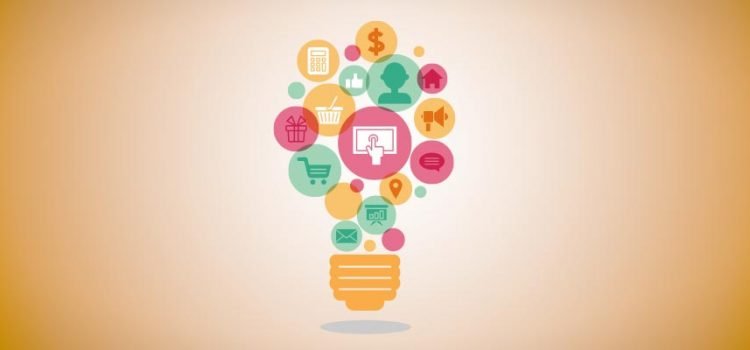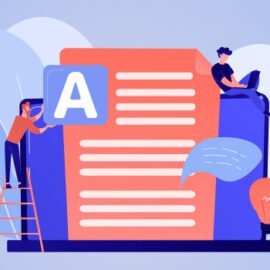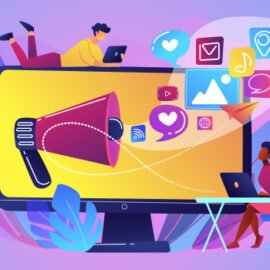
|
Getting your Trinity Audio player ready... |
Have you ever felt like you’re shouting into the void trying to sell your products? Have you ever invested in advertising that didn’t pay off? Welcome to the club of those who haven’t yet discovered the power of inbound marketing.
We live in an era where people don’t want to be interrupted. They want to discover solutions on their own, in their own time, based on trust and valuable content. And that’s where inbound marketing comes in: a customer-centric approach where every interaction is built to attract, engage and delight.
It doesn’t matter if you’re a solo entrepreneur, a marketing manager, or an SME owner — understanding and applying inbound marketing can completely change the game of your digital communication. Let’s dive into this universe together!
What is inbound marketing
Clear and objective definition
Inbound marketing is a digital marketing strategy that aims to attract the target audience organically and voluntarily, through the production of relevant, educational and personalized content. In this way, instead of interrupting the consumer with ads, inbound marketing offers useful solutions that the consumer finds when they are searching for them.
“Inbound marketing is the art of being found by the right people, at the right time, with the right message.”
Imagine that your company is a magnet, and your content is the magnetic field that attracts the ideal customer. So, no more pushing random offers: inbound focuses on attracting those who are truly interested in what you offer.
Difference between inbound and outbound
While outbound marketing is more intrusive (such as TV commercials, cold calls and banners), inbound marketing is permissive. In this way, the difference is as big as fishing with a net or with the right bait for the right fish.
See the difference in one sentence:
- Outbound says: “Buy from me, now!”
- Inbound says: “Here’s something that might help you. Want to learn more?”
In inbound, the customer comes to you because they trust your content — and not because they were bombarded with ads. Of course, depending on the circumstances, both — outbound and inbound — can be used together.
How inbound marketing works in practice
The basis: relevant content and added value
If there is one word that defines inbound marketing, it is content. But not just any content — we’re talking about useful, engaging information that solves real pain points for your audience.
In this sense, inbound works like this: the customer has a question, searches on Google, finds an article on your blog and thinks “Wow, that’s what I needed!”. That’s it, at that moment you’ve gained attention, generated value and started a relationship. And the best part: without forcing anything.
This content can be in different forms: articles, videos, e-books, infographics, podcasts… it all depends on where your audience is and how they consume information.
“Inbound marketing is the bridge between the customer’s problem and your solution. And content is the road that takes you there.”
But be careful: it is not enough to publish for the sake of publishing. The secret is to align each piece of content with the customer purchase journey, creating personalized experiences that accompany you until the final decision.
The Customer Journey
To understand inbound marketing, it is essential to visualize the consumer journey. It consists of stages that reveal the level of awareness and maturity of the customer in relation to the pain and the solution. Thus, we have:
- Learning and discovery – The client does not yet know that they have a problem. Here, your role is to raise awareness with introductory content.
- Problem recognition – He realizes that something needs to be resolved. So, it’s time to delve deeper into the topic and show causes and consequences.
- Consideration of the solution – The client is already actively searching for solutions. This way, you can present alternatives, including yours.
- Purchase decision – It’s the moment of truth. Here, social proof, testimonials and differentials make all the difference.
The beauty of inbound is that it guides the consumer from one stage to the next, offering exactly what they need at each stage. In this way, it is like taking a guest through the house, showing them room by room until they decide to stay.
Now let’s move on to the next section, where we’ll break down each stage of inbound marketing, including strategies, examples, and best practices. Ready? Let’s go!
The steps of inbound marketing
Attraction: Getting the Right Attention
Attracting traffic is just the beginning. So with inbound, you don't want to any visitor — either right visitor. Someone who has the potential to become a lead and then a loyal customer.
How to do this? With a mix of SEO, social media, content marketing and smart ads.
- SEO (Search Engine Optimization): Optimize your content with relevant keywords — like “inbound marketing,” for example — to appear in Google results.
- Blog: Produce strategic articles that answer real questions from your persona.
- Social Media: Share useful content, create connections and dialogue with your audience.
- Paid traffic: Use targeted ads to accelerate your visibility with the right audience.
Remember: attraction is like a first date. So, it needs to generate interest without being invasive.
Conversion: Turning visitors into leads
Have you managed to attract the right audience? Great. Now it’s time to convert them into leads — that is, people who provide their data in exchange for something of value.
This “something” could be an e-book, a spreadsheet, an exclusive video, a free trial… the important thing is that it is relevant and useful.
The formula is simple: Visitor + Rich Content + Form = Lead
But be careful: the user experience needs to be fluid. Therefore, well-designed landing pages, clear CTAs (calls to action) and objective forms make all the difference.
And of course, all this respecting the LGPD standards. After all, trust starts with the first click.
Relationship: nurturing trust
Now that you have leads, you need to build relationships. This involves strategies like personalized email marketing, automated lead nurturing, and targeted offers based on interest.
Remember: this step is like cultivating a garden. You won't reap the rewards on the first day, but with consistency, the results will come.
At this stage, use the power of copywriting to keep interest alive. Also, talk to your lead as you would talk to a friend: with empathy, truth and purpose.
Sales: when content becomes conversion
If you’ve worked through the previous steps well, selling becomes second nature. After all, the lead already trusts you, understands the value of your solution, and is ready to make a decision.
Here, you can use:
- Testimonials and case studies
- Free demos and trials
- Exclusive offers and smart scarcity
- Pre-sales or inside sales team
And once again, content continues to be your greatest weapon — whether in product videos, offer landing pages or even in emails with irresistible proposals.
Loyalty: customers who become fans
Inbound marketing doesn’t end with the sale. On the contrary, that’s where the real game begins. Satisfied customers can become advocates for your brand, generating a continuous cycle of new opportunities.
Invest in:
- Proactive after-sales
- Exclusive content for customers
- Loyalty or referral programs
- Continuous communication with value
“A delighted customer is worth more than a thousand cold leads.”
And that is the essence of inbound: creating real, long-term connections that transcend simple commercial exchange.
Sales funnel and inbound marketing
Understand ToFu, MoFu and BoFu
The sales funnel is a visual representation of the path a lead takes until becoming a customer and is directly related to the customer journey. In inbound marketing, this funnel is divided into three stages main:
- ToFu – Top of the Funnel (Learning and Discovery)
The focus here is to attract. The person doesn’t yet know they have a specific problem. The content should be educational and inspiring — blog articles, introductory videos, social media posts. - MoFu – Middle of the Funnel (Recognition and Consideration)
Now the lead understands that they have a problem. So, your role is to present possible solutions. This phase includes e-books, webinars, comparisons, and more technical content. - BoFu – Bottom of the Funnel (Purchase Decision)
The lead is almost there. They just need a little push. So use social proof, case studies, customer testimonials, exclusive offers, free trials.
“The secret is to deliver the right content, to the right person, at the right time.”
Treating all leads the same way is a mistake. Each stage requires a unique approach, with specific content and interactions.
How to create strategic content for each phase
Creating funnel-aligned content is the heart of inbound marketing. Here’s a practical example for a productivity software company:
- ToFu: “How to be more productive working from home” (article)
- MoFu: “Complete guide to time management tools” (e-book)
- BoFu: “Try our productivity software for free for 14 days” (landing page)
Do you see the progression? The lead goes from awareness to action, guided by content that answers their questions naturally and effectively.
Building your inbound marketing strategy
Definition of persona
Before anything else, you need to know who you are talking to. persona It is the semi-fictional representation of your ideal client. Unlike the target audience, the persona has a name, a face, pains, dreams, challenges.
Example:
- João, 35 years old, marketing manager, feels that his team is unproductive and is looking for a digital tool to improve the team's performance.
This clarity will guide all your communication — from your tone of voice to the type of content you create.
Mapping the purchase journey
Once the persona has been defined, the next step is to understand their purchasing journey. What do they feel? What do they search for? What objections do they have?
Ultimately, mapping this journey helps predict the lead's steps and prepare the ground with the ideal content for each phase.
Therefore, use questions like:
- What does my client search for on Google?
- What kind of doubts does he have before purchasing?
- What kind of evidence does he need to make the decision?
That mapping is the backbone of inbound.
Content planning
Now it’s time to get down to business. So, based on your journey and personas, create a strategic editorial calendar. Include:
- SEO-focused blog posts
- Rich materials for conversion
- Nutrition emails
- Explanatory videos
- Content for social networks
Planning is what turns effort into results. And remember: quality comes before quantity.
Ideal tools and channels
For your strategy to work, you will need a few key tools:
- Marketing automation platform (such as RD Station, HubSpot, Mautic)
- CRM for lead management
- CMS for your blog (WordPress, for example)
- SEO Tools (Semrush, Ubersuggest, Google Search Console)
- Analytics to track performance
And of course: invest in metrics. In inbound marketing, everything can (and should) be measured: visits, leads, conversion rate, ROI.
Examples of successful inbound marketing
Want to see this in action? Here are some real and inspiring examples:
1. Rock Content
Rock is a reference in content marketing in Brazil. The company started by producing blog articles to attract qualified leads. Over time, they created rich materials and email funnels to nurture these leads — and today they are market leaders.
2. RD Station (Digital Results)
RD applied its own inbound methodology to grow. Therefore, they created comprehensive guides, offered free tools (such as the persona generator) and nurtured leads until they made a decision. The result? They became a global inbound case study.
These examples show that, with strategy, any business can scale using inbound.
3. Vero Contents Case Study
An example of well-structured inbound marketing was the Dan Solução case, developed by our team and highlighted in the RD Station Partnership Program. The company, specialized in solutions for infiltration in condominium buildings, started to invest in digital to acquire customers.
Learn more about the Dan Solution case.
Why Inbound Marketing is the Present and Future of Sales
People no longer want to be interrupted. Instead, they want to be educated, inspired, and listened to.
Inbound respects this behavior. So, it transforms companies into authorities, brands into communities, salespeople into consultants.
Additionally, inbound marketing generates more qualified leads, reduces customer acquisition cost (CAC), creates lasting relationships, and provides efficient scalability.
After all, in a hyperconnected world, gaining attention has become expensive. But gaining trust? That’s gold. And inbound is the most direct path to get there.
Get started with an inbound mindset now
You don’t have to shout to be heard. With inbound marketing, you can attract the right customer with valuable content, delight them with knowledge, and sell with empathy.
Furthermore, this strategy is not a fad. Above all, it is a paradigm shift, a more human, intelligent and effective way of doing marketing. So, if you want to grow consistently and with authority, inbound marketing is your best ally.
Start small, but start now. After all, the future of your business could lie in the next piece of content you publish.
How about putting together an inbound marketing strategy for your company? Talk to our team of experts!
Inbound Marketing Frequently Asked Questions (FAQ)
1. What is inbound marketing in one sentence?
Inbound marketing is a strategy that attracts customers organically and voluntarily, through relevant and personalized content.
2. What are the steps of inbound marketing?
The main stages are: Attraction, Conversion, Relationship, Sales and Loyalty.
3. What is the difference between inbound and outbound marketing?
Outbound interrupts the consumer with ads. Inbound attracts with valuable and relatable content.
4. Does inbound marketing work for any type of company?
Yes! It can be adapted for B2B, B2C, large or small companies, as long as there is consistency and customer focus.
5. How long does it take to see results with inbound marketing?
It depends on the market and the effort applied, but generally the first results appear in 3 to 6 months, with consistent growth in the long term.
Article originally published on 09/20/2021 and updated on that date.

Marcel Castilho is a specialist in digital marketing, neuromarketing, neuroscience, mindfulness and positive psychology. In addition to being an advertiser, he also has a Master's degree in Neurolinguistic Programming. He is the founder, owner and CEO of Vero Contentes and the offline agency VeroCom.




Comments are closed.